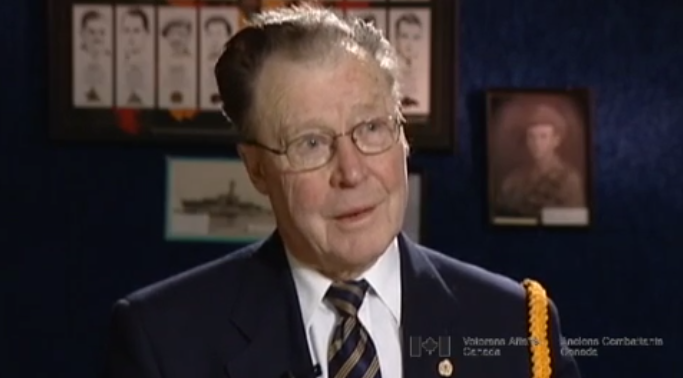On the 10th of June, they took us out of Troon over to
Greenwich, Scotland, and onto a ship, and we pulled out of
Greenwich, Scotland, 10th of June, didn't know what for. More
exercises or something, we figured. Well, I never saw land for
thirty days. We had no idea where we where and some guy said we
were near Greenland one time, someplace else, but it was an
evening of July the 9th that we could see land off to the left.
It was Spain, it was all lit up, lights on. Boy, what a sight
‘cause everything been blacked out for years, eh. Spain was all
lit up. Spain wasn't in the war, and they told us then we were
going in between Gibraltar and Spain. We were invading Sicily in
the morning. That'd be early, early morning of July the 10th.
They give me a little piece of paper, half as big as one of
those pages you got there, not even that big, pencil drawings on
it showing the beach where I was gonna be landing, remember it
just said "Red Beach". I was landing on Red Beach and it showed
a few depths of water and built this little hand drawing on the
piece of paper. We stood in the damn hallways there for hours,
it seemed like, and that was a terrifying thing for me, was
getting off that boat ‘cause I was looking at these buildings
out here, a deck we had to scramble over. They threw out their
big fishing net over the side of the ship, but it was like a
fishing net made out of about half inch rope, squares about six
or eight inches square, hung down the side of the boat. We had
to go over the top and scramble down that thing and drop into
these landing craft, assault craft that went ashore with a ramp
on the front. Well, that thing was likely, about like about four
or five stories high out of the water. That's a big ship, and I
don't like height, either. I can't, I could go in the air plane
but I couldn't look over the edge, it would make you sick coming
down that thing, and everybo... it was awful. The, climbing up a
rope is alright ‘cause everything's tight. But go down a rope,
it's a different thing. It's a miserable thing, guys stepping on
your hands and the damn butt of the Bren gun would go in the
thing (inaudible) Well, like I say, we been on that boat for 30
days. We didn't eat much on there, twice a day. I really didn't
care, we had to drop about six feet into that landing craft. It
didn't matter. I wouldn't have cared if we'd have missed the
thing at that stage of the game. But that was an experience.
(inaudible) when I was with the Vandoos. But I guess we... it's
hard to tell on water how far we were out, but I think it was a
couple of miles that this landing craft, which was just like a
big boat, it held about 30 guys, and got into about four feet of
water, the front come down and we jump out and get soaked up to
here, of course. Had to go ashore. We had a couple of
Messerschmidts, whatever they were, strafed us a couple of
times, but there wasn't much aircraft though, and there was no
shore activity except we get off, get ashore and get dug in.
They give us hell at, at night, about eight, nine, ten o'clock.
They started giving us hell, but, for the actual getting off the
boat onshore, it wasn't, other than the excitement in, in the
water and that so it was so many things else.
It was a different experience, alright.





